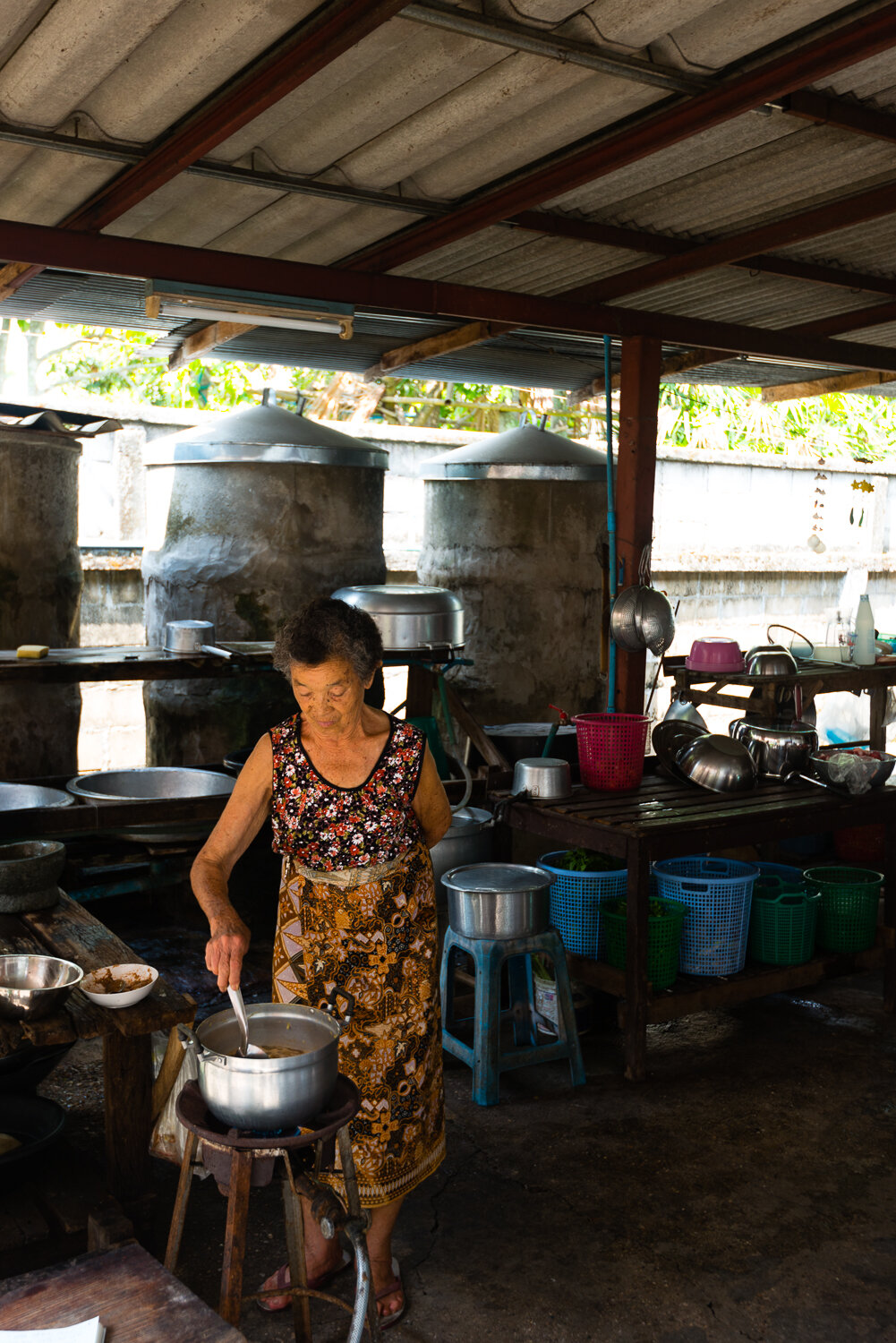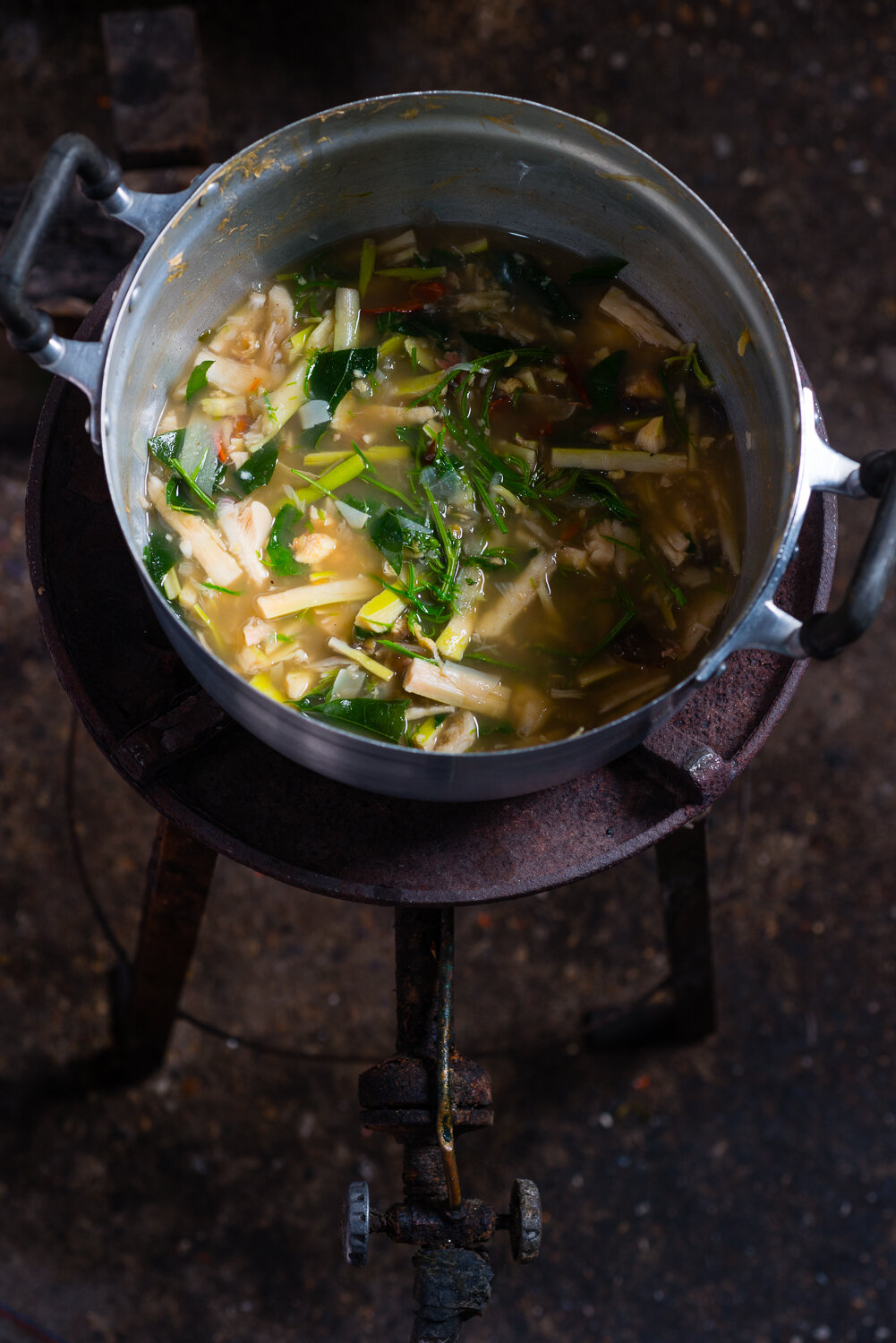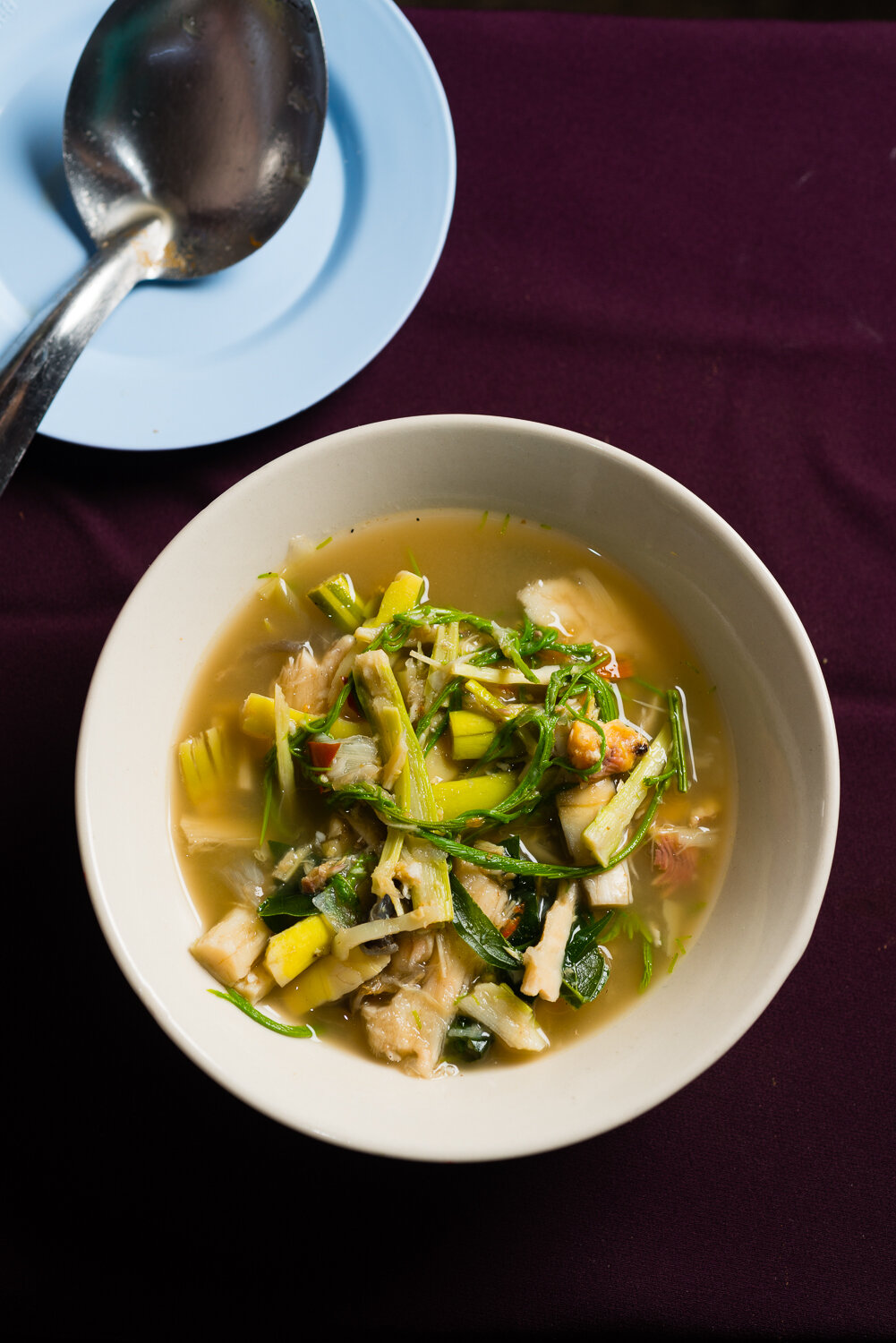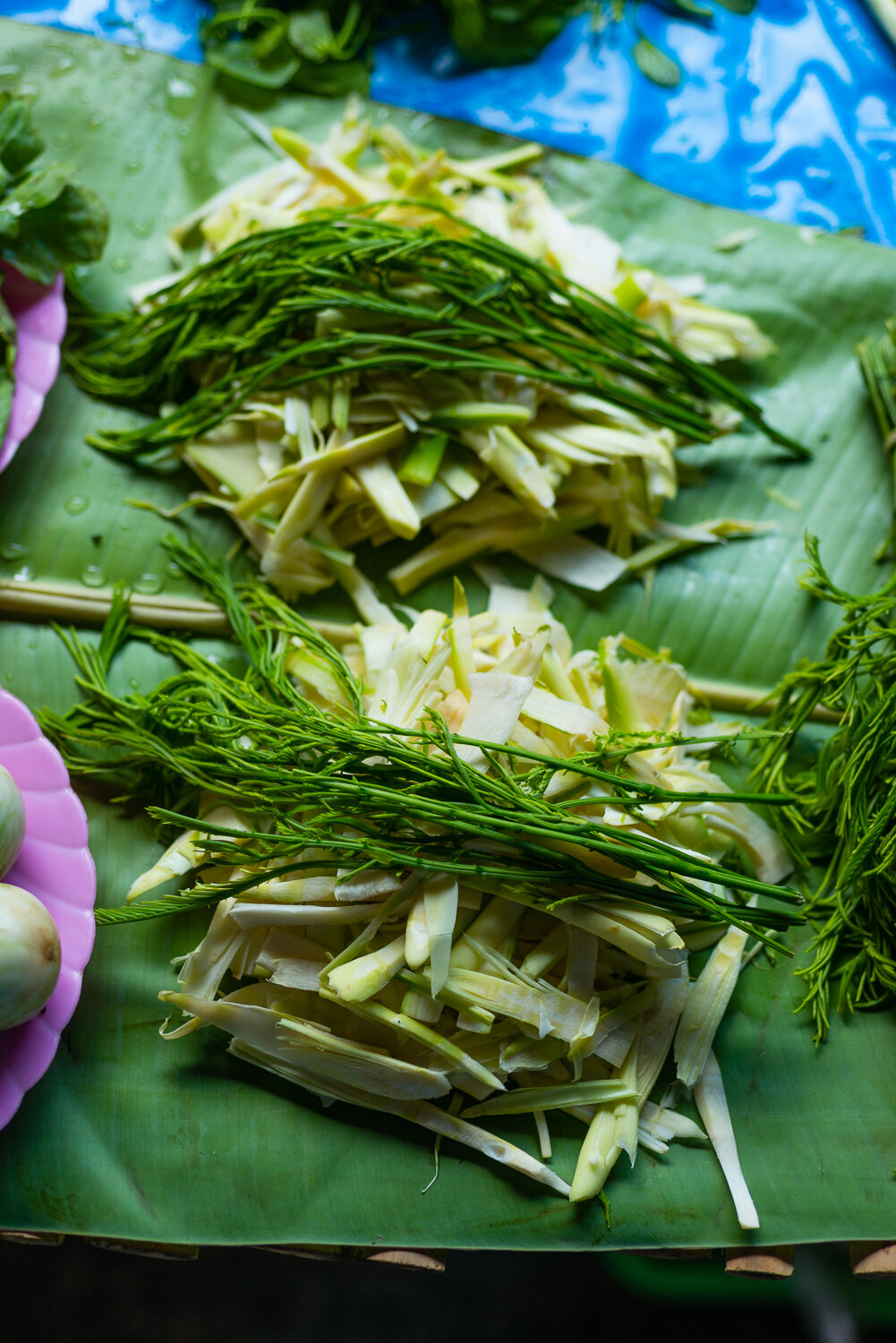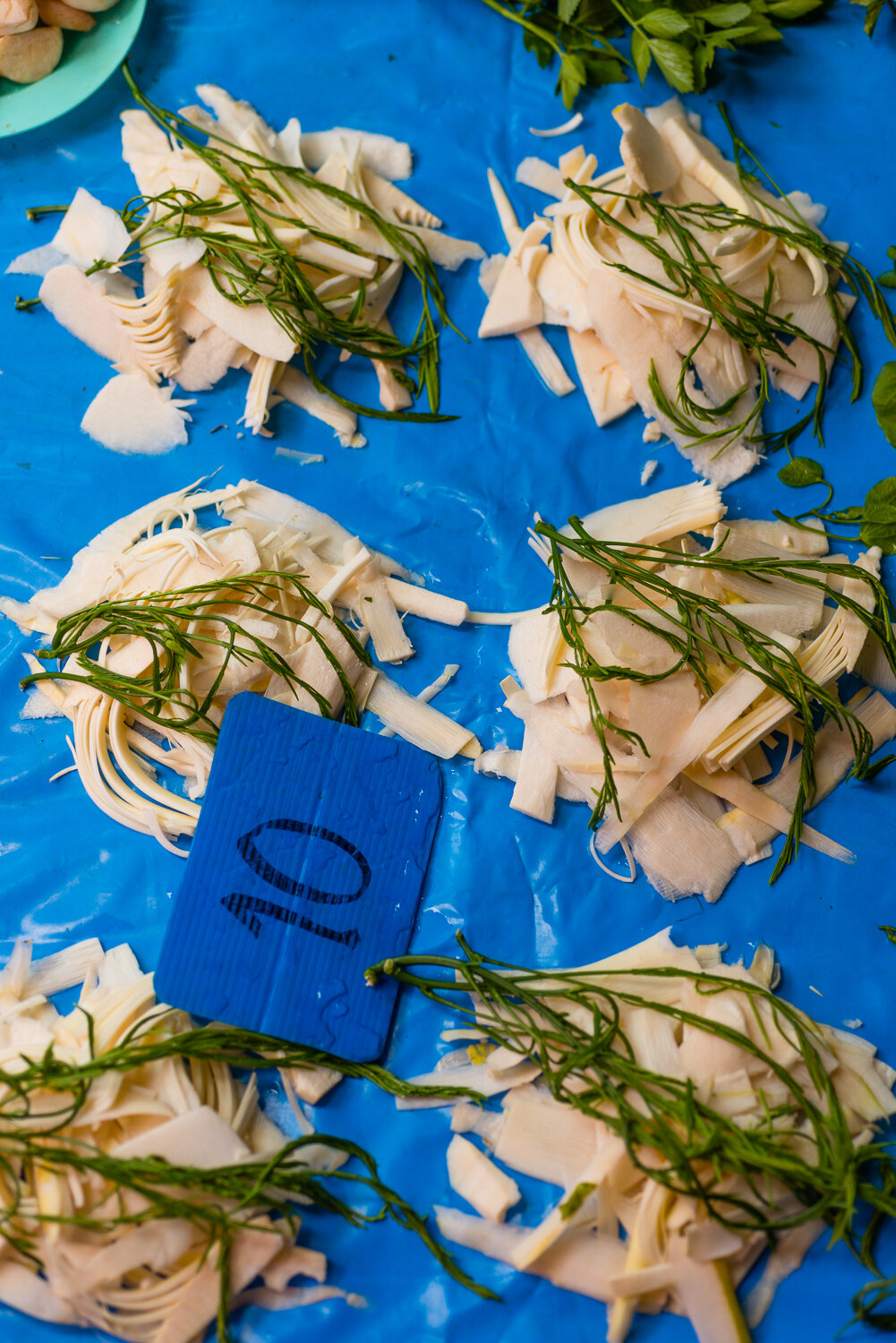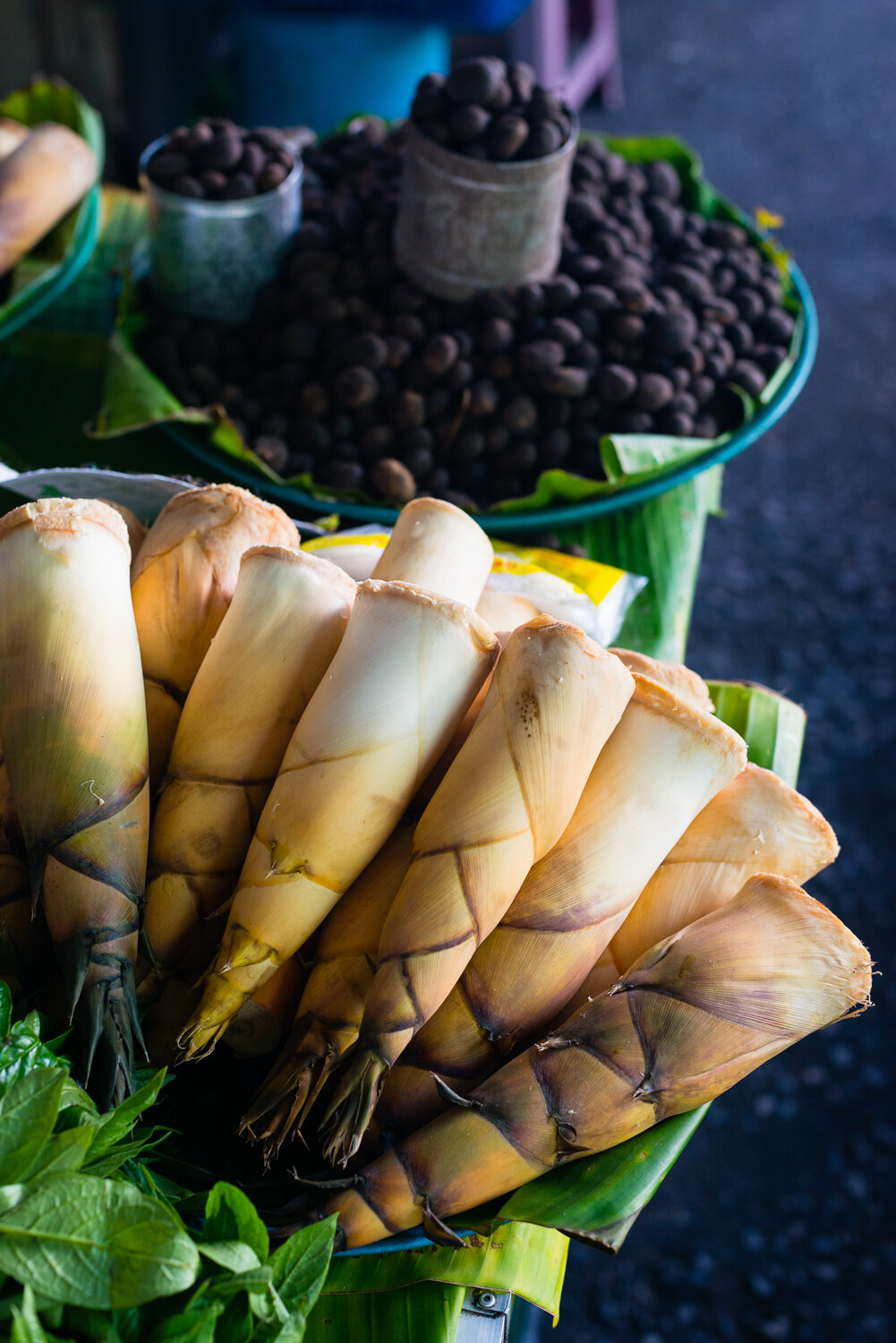Among northern Thais, particularly those living in the countryside, the undisputed king of the wet season bounty is bamboo. Across the country, Thais consume approximately 50 types of bamboo, which are eaten in a variety of dishes, from soups to stir-frys. But particularly prized in northern Thailand is young bamboo, which early in the wet season emerges from the soil tender and sweet – the perfect foil for a hearty, spicy, herbal dish.
Wimorn Penphaen is a Chiang Rai based cook, collaborating with her family to prepare and sell eight different northern Thai dishes at Chiang Rai’s evening market on a daily basis. She was kind enough to let me into her home kitchen on the day they were making kaeng naw, a soup of young bamboo bulked out with grilled catfish and made spicy and fragrant via the addition of herbs.
“It’s something people love to eat during the rainy season,” explains Wimorn, of the dish.
When I arrive at Wimorn’s expansive, open-air kitchen, one relative is pounding chilies with a mortar and pestle while another is simmering bamboo in a saucepan and yet another washes herbs. Kaeng naw is a relatively fiddly dish to make, but in this assembly line-like situation the final product emerges amazingly quickly, and after what seems like only a few minutes, Wimorn hands me a small bowl for a taste. “It should taste a bit spicy and a bit salty, but mostly balanced in flavor,” she explains. “Any sweet flavor should come from the bamboo.”
Indeed, Wimorn’s kaeng naw packs a subtle sweetness as well as a pleasant crunch – attributes that I, like the people of northern Thailand, have come to associate with Thailand’s rainy season.
Kaeng Naw
แกงหน่อ
A soup of young bamboo, grilled fish and fragrant herbs
Serves 4
Ingredients
For the Soup
1 medium-sized catfish (approximately 250 grams/9 ounces)
400 grams fresh, immature bamboo, sliced into thin sections approximately 3 inches long and ½ inch wide
18 yanang leaves, stems discarded (you should have approximately 10 grams of leaves total), torn
15 wild betel leaves (approximately 15 grams total), stems discarded, torn
12 sprigs of young cha-om (approximately 50 grams total), tender leaves removed, coarse stalks discarded
For the Curry Paste
4 large fresh chilies (approximately 70 grams total), sliced
5 shallots (approximately 40 grams total), peeled and sliced
20 small cloves garlic (approximately 15 grams total)
2 teaspoons shrimp paste
1 teaspoon fermented fish sauce
Thai Kitchen Tools
Thai-style charcoal grill or barbecue
granite mortar and pestle
Procedure
Prepare the catfish: Light the charcoal and allow the coals to reduce to low heat (approximately 250F to 350F, or when you can hold your palm 3 inches above grilling level for 8 to 10 seconds). Grill the catfish, turning once, until done, a total of around 30 minutes. When cool enough to handle, remove the meat, discarding the skin and bones (you should have about 100 grams of flaked catfish flesh).
Prepare the bamboo: While the catfish is grilling, to a medium saucepan, add the bamboo and enough water to cover by a couple inches. Bring to the boil, reduce heat to a high simmer, and boil until the bamboo is slightly tender but still crunchy, about 20 minutes. Remove from the heat, discarding the water.
Make the curry paste: While the bamboo is boiling, to a granite mortar and pestle, add the chili, shallots and garlic. Pound and grind to a coarse paste. Add the shrimp paste and fermented fish sauce, pound and grind to a fine paste.
Make the soup: To a large saucepan over high heat, add 1 quart of water, the curry paste, bamboo and the flaked catfish meat. Bring to the boil, reduce heat slightly to a rapid simmer. Allow soup to simmer until just slightly reduced and fragrant, about 3 or 4 minutes. Add the yanang leaves, wild betel leaves and cha-om, and allow to simmer until herbs have wilted slightly and are fragrant, another 2 or 3 minutes. Taste, adjusting seasoning, if necessary; the kaeng naw should taste salty and savory, from the shrimp paste, slightly spicy and fragrant, from the garlic and herbs, with a pleasantly crunchy texture.
Remove to a serving bowl and serve warm or at room temperature, with sticky rice, as part of a northern Thai meal.












